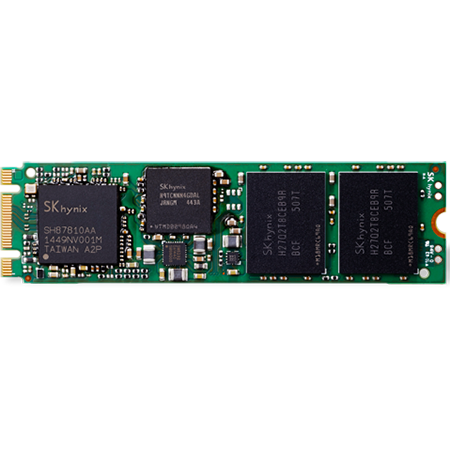Early Verdict
SK Hynix delivered a consumer SSD that works best under heavy workloads like those found in professional audio and video applications. The SSDs are much faster than hard disk drives at basic applications like Word and Excel, but there are better choices available, like the SL308. If you run heavy workloads then the SC308 is an option.
Pros
- +
Aggressive heavy workload performance
- +
High sustained and consistent performance
- +
Included SSD management software
Cons
- -
Poor "basic" application performance
- -
Low availability (at time of writing)
- -
Poor mixed workload performance
Why you can trust Tom's Hardware
Features & Specifications
SK Hynix's new mainstream consumer SSD began popping up for sale last month, but it has been shipping for some time inside big box store notebooks. The SC308 comes to market in 2.5-inch and M.2 2280 single-sided SATA form factors, but the flash is the most interesting feature. The SC308 comes with high-performance multi-level cell (MLC) NAND, but it sells at TLC prices.

Consumer SSDs have been in a funk for nearly a year. I'm not talking about the soaring prices due to the NAND shortage, or the current crop of DRAM-less models that perform like 10-year old SSDs. I'm referring to the three-bit per cell (TLC) NAND that neuters performance. That’s disappointing for a technology built from the ground up to go fast. For the most part, TLC took the steam out of the locomotive that was high-performance SATA. You can still find high-performance SSDs, but only if you break the piggy bank.
NVMe has a firm grip on the performance market, but not everyone has a computer that supports the speedy protocol. There is still a market for SATA MLC SSDs, but it's shrinking with every new PC purchase. That doesn't mean anything if you’re on the SATA side of the fence and need a quality upgrade at a reasonable price.
SK Hynix hit the middle ground with the SC308 MLC-based SSD. Unlike the new TLC products, the SSD doesn't feature an SLC buffer to increase burst performance. The dual-core controller does deliver high endurance levels and consistent performance. That's useful for light workstation use, and occasionally professional software. In some ways, SK Hynix's SC308 targets the Samsung 850 Pro. That's both good and bad. The 850 Pro is a very good SSD for heavy workloads, but the 850 EVO overshadows it in desktop use. The SC308 has the same issue. A new NVMe SSD better services those heavy workloads, but not everyone has the extensive list of components to run the new storage protocol. That's the market for the new SK Hynix SC308.
Specifications
The SK Hynix SC308 comes to market in only three capacities that range from 128GB to 512GB. The series ships in two form factors like many of the mainstream SSD offerings from the fab companies (Intel, Micron, Samsung, Toshiba, SanDisk, and SK Hynix). SK Hynix sells the SSDs in both common form factors to increase sales to OEMs.
The SC308 uses the same controller we found in the SL308. SK Hynix purchased Link_A_Media Devices (LAMD), a controller design house, and continued to build on the original designs. The acquisition gave SK Hynix direct control over all of the major components used to manufacture an SSD; namely, the controller, NAND, and DRAM. Currently, SK Hynix is the only SSD manufacturer besides Samsung that manufactures all of the key components, but Micron will soon join the exclusive club after purchasing Tidal in 2015. We've already mentioned the MLC flash in the introduction. It's a welcome sight after testing SATA-based TLC SSDs almost exclusively in 2016.
The controller appears to be the weak link. Many of the performance traits we found in the original LAMD SSDs have resurfaced with the newer SK Hynix consumer SATA SSDs. The SL308 uses the same SH87820BB controller as the SC308 we're testing. It had a weakness during mixed workloads, so we expect to see the same trend in our testing.
Get Tom's Hardware's best news and in-depth reviews, straight to your inbox.
The SC308's performance varies between the three capacities. All three carry the same sequential read rating of 540 MB/s, but the sequential write performance starts at 130 MB/s for the 128GB and peaks at 460 MB/s for the 512GB model. Random performance spans between 90,000 and 95,000 read IOPS and 30,000 to 85,000 write IOPS (with a stop at 60,000 write IOPS for the 256GB model).
Pricing & Accessories
Our SK Hynix SC308 SSDs arrived well before retail availability, so we don't have packaging or extensive pricing information. Tiger Direct lists the SC308 512GB as "coming soon" with a $168.99 price tag. There are a few eBay sellers with drives from system pulls, but prices vary.
The retail products don't ship with any accessories to speak of, but SK Hynix's SSD software management tools work right out of the box.
Warranty & Endurance
The SC series carries a three-year limited warranty.
A Closer Look
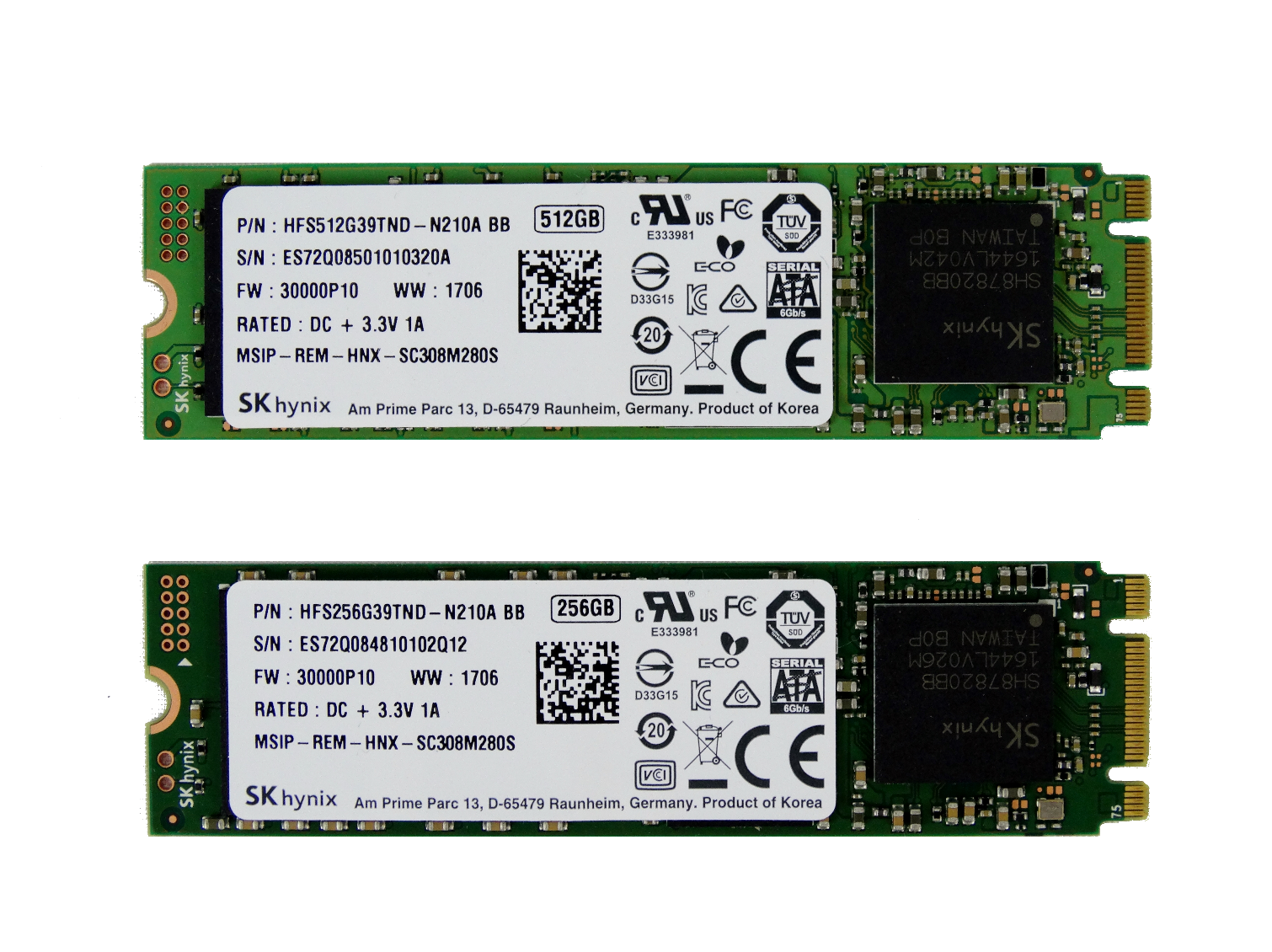

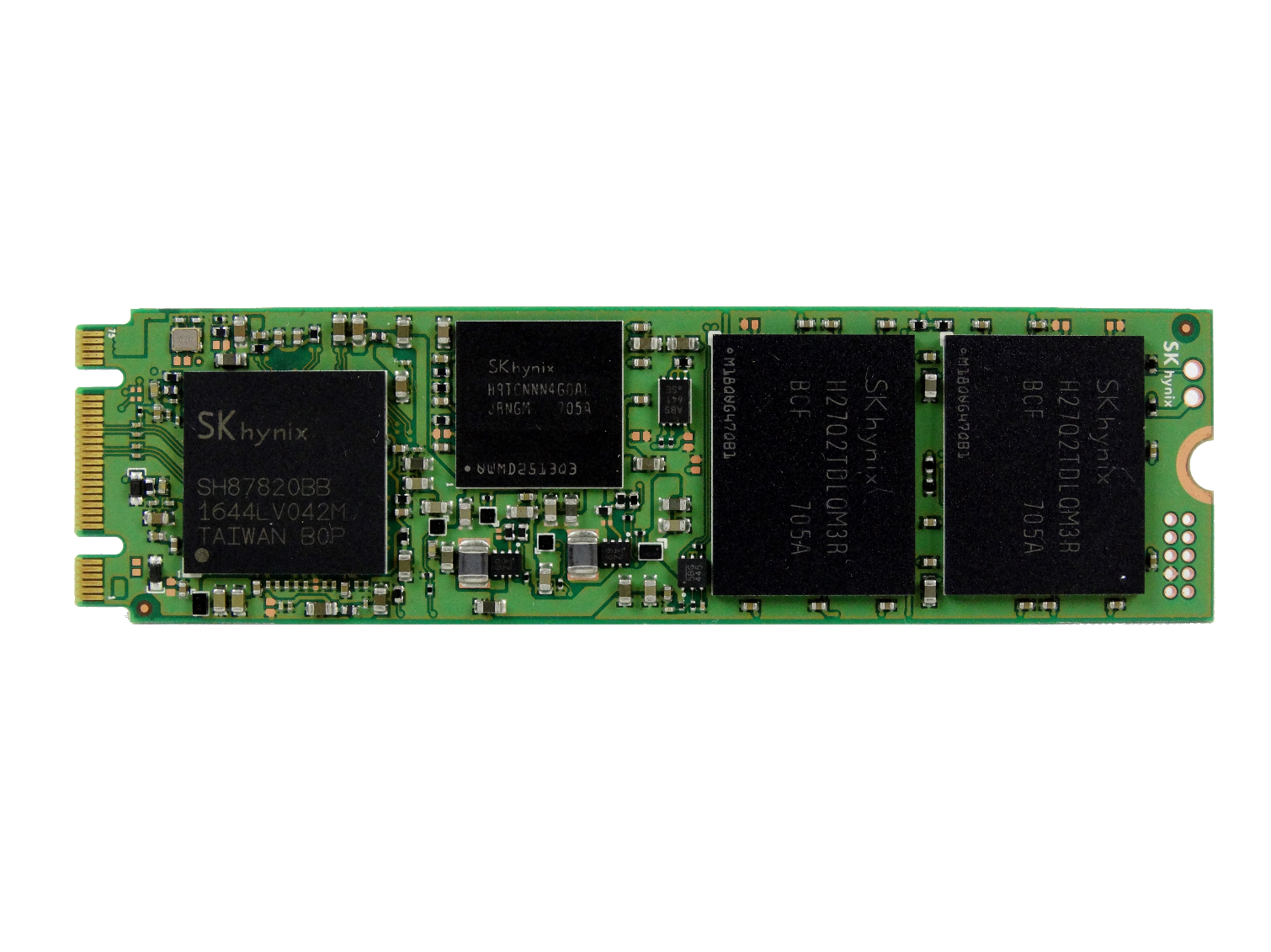
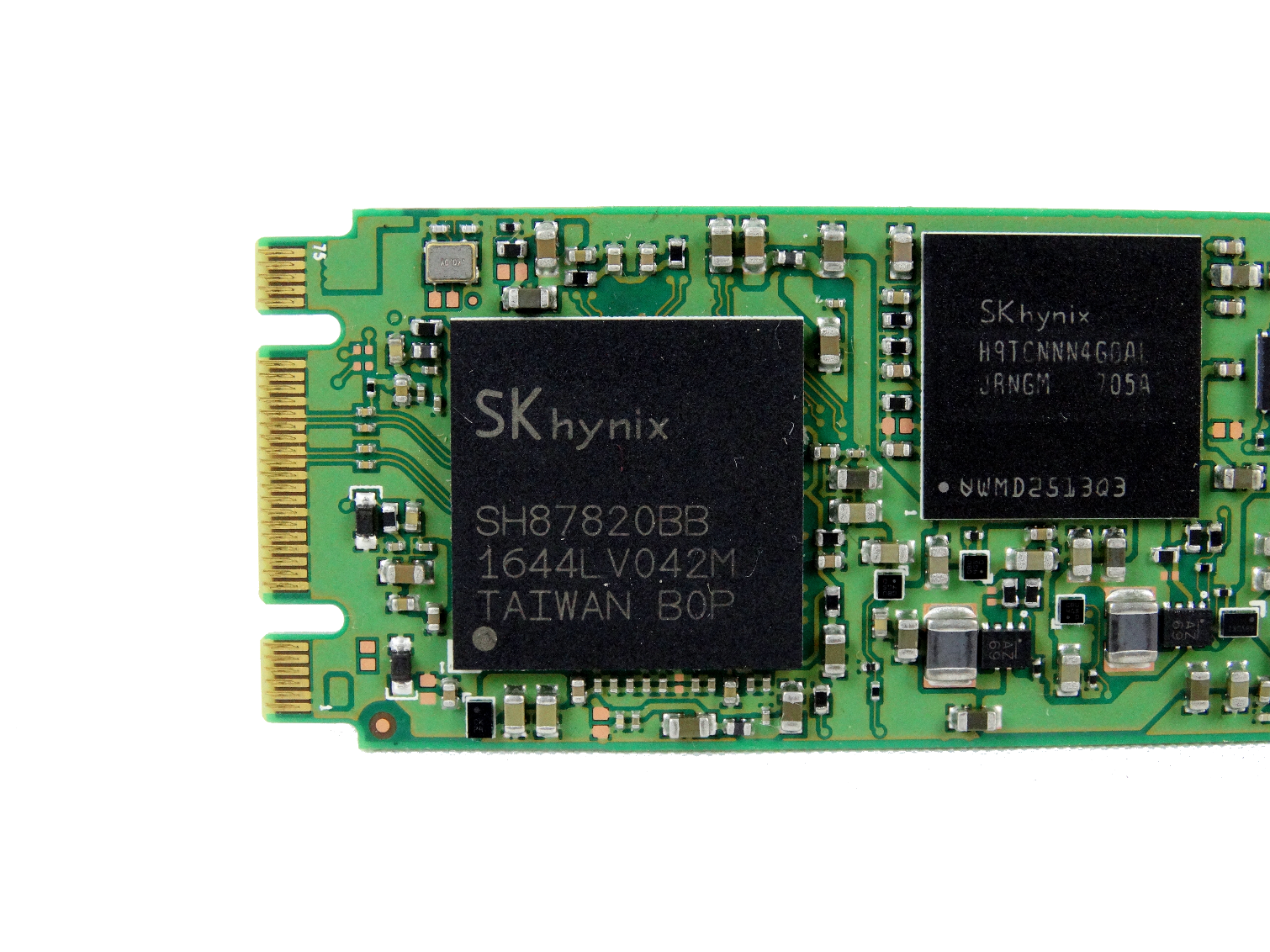
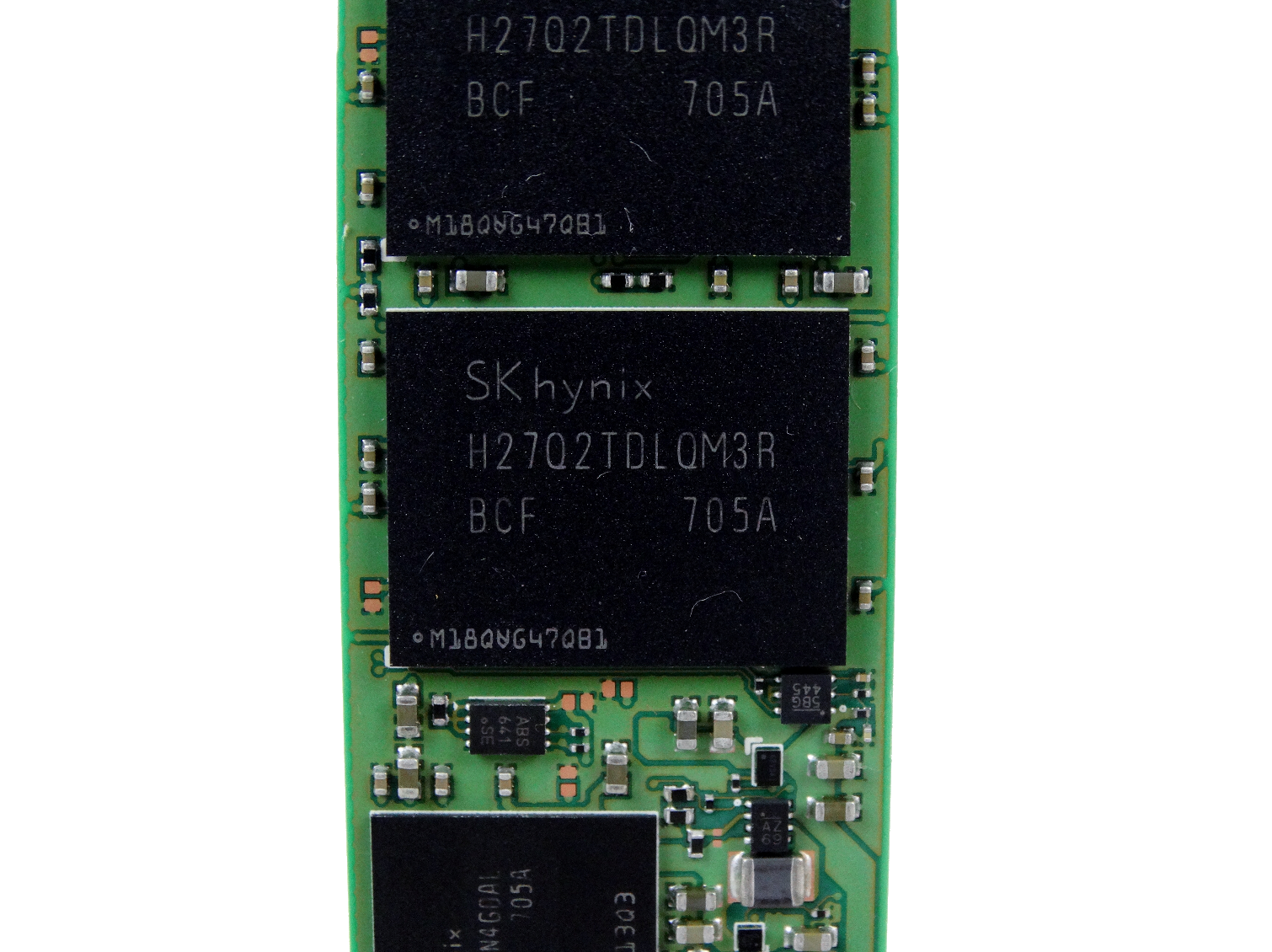
SK Hynix sent us M.2 SC308's with 256GB and 512GB capacities. M.2 SATA SSDs have keys for both the M and B section. They work in most M.2 slots unless the slot is designated as PCIe-only. Many notebooks and desktop motherboards feature dual-purpose M.2 slots that accept both AHCI SATA and PCIe NVMe SSDs.
The SK Hynix SH87820BB controller is very similar to the original Link_A_Media design. The company has improved on the design over the years by adding support for the latest flash and other features, but we still observe some of the odd behavior that we found several years ago.
MORE: Best SSDs
MORE: How We Test HDDs And SSDs
MORE: All SSD Content
-
eyupo92 The interface/protocol entry 'NVMe 1.2' on the specifications table is wrong - I have testing 128 GB 2.5" and 256 GB m.2 versions, and they are SATA 6 Gbps. In the article you are already mentioning it as SATA, so fixing the table would solve this small issue.Reply -
mapesdhs $130 for the MX300? I wish; it's more like $195 equivalent here (UK). Strangely, the disparity vs. the 850 EVO is less severe, it's priced the same as the MX300, with the SL308 a bit below that. No sign yet of the SC308 from normal sources.Reply -
alextheblue I applaud the use of MLC, but without a really good controller, it's kind of a waste. For most users, older SATA systems upgrading to an SSD will still be better served with an 850 Evo or similar. It's better in typical end-user scenarios, they don't need the heavy workload and sustained performance as much as they need the light workload / burst speed. I would especially point to the random mixed workload (80% reads) - I feel that sort of test is fairly good at highlighting the differences in performance for the average user's workload.Reply
I find it kind of sad there isn't really anything that fully dethrones the 850 Evo on performance/value in the SATA world. It's been what, 2.5 years? Longer? There's still a lot of older systems with plenty of CPU horsepower, for which an SSD upgrade from a mechanical drive would vastly improve user experience. -
cryoburner ReplyThe low mixed workload performance really hurts the user experience, and that shows in the PCMark 8 Storage test.
...Tom's claims, immediately after posting a bunch of "Real-World Software Performance" charts that show all the drives performing very similar to one another. In what way does it "really hurt the user experience" when there's only around a 2% difference in application performance between the drives? Is anyone even going to subjectively distinguish such a difference? If it takes an extra 2 seconds to complete a 2 minute task, how much does that even really matter? Is it worth paying 20% more for another drive just to get 2% better performance in real-world tasks? -
derekullo Ooo I recognize this as the ssd in the Dell 7440s we just bought at work (256 gigabytes).Reply
When your sequential read is basically the limit of SATA and you are pushing 9000 -12000 iops at a queue depth of 1 - 2 the bottleneck is no longer the storage device, it's the storage interface, SATA.
Having said that the only way to really compete is:
1. Battery Life (40 minutes is noticeable between this drive and the Samsung)
2. IOPS at a queue depth of 1 - 4 (Basically so you can put a higher number on the packaging)
3. Write Speed
I use a Patriot Memory 256GB Supersonic Magnum 2 with the Windows 7 Bootable install and I'm able to install a fresh Windows 7 in about 10 minutes on a computer with this ssd.
Windows update is blazingly fast.
I use this combination to create WIM images that I capture for use on other computers.
The read speed of the flash drive, 400 MB/s, is faster than the write speed of the Sk Hynix 261 MB/s.
I would have rathered a Samsung 960 Pro or even a Samsung 850 Evo, but I'm just glad Dell didn't give us an ADATA ... (with that write speed 62 MB/s)
We've had Sata 3.0 since 2009.
Hopefully we can see some SATA 3.2 motherboards / ssd releasing soon.
https://en.wikipedia.org/wiki/Serial_ATA#SATA_revision_3.2_.2816.C2.A0Gbit.2Fs.2C_1969.C2.A0MB.2Fs.29
NVME / m.2 is faster but you are limited in the amount of drives that can be attached to the motherboard. -
HERETIC-1 Hi Chris,Reply
Agree application bandwidth is a little sad.
Thro 500 is probably the most common size for a lappy,I think 250 is
common in desktops as a boot drive-on that note is there any chance
of a review on MX300-275GB-seems to be a very popular drive-also the
WD 250 blue would be nice as well..............................
Keep up the good work............. -
AgentLozen I hate how TLC flash is ruining the solid state drive market. Whenever it's used, the outcome is ALWAYS horrendous. I can't think of a single SSD from within the last 3 years that uses TLC and is even remotely well regarded.Reply
If you're smart like me then you'll stick with the good ol' Intel x25-m. I've got two in RAID 0 in my system at home and I have a few more sitting off to the side in case anything ever goes wrong with them. If you're not familiar with the Intel x25-m, that's because they came out before TLC reared it's ugly head. The x25-m has no competition even today because it's outfitted with MLC flash. Some people say that NVMe M.2 drives are the future, but they can't compete with my Intel drives because they are outfitted with MLC.
If you guys wanna talk about how cool MLC flash is please PM me. Don't waste my time with TLC though. You might as well be making punch cards and destroying them immediately after if you want the speed and endurance of TLC.
(If it wasn't clear, I'm being facetious. TLC is perfectly fine for home desktop use. There are plenty of drives like the Samsung 850 and 960 EVO that demonstrate that TLC is a fundamentally sound technology. Please don't PM me gushing about MLC flash. thx) -
CRamseyer Reply19898964 said:The low mixed workload performance really hurts the user experience, and that shows in the PCMark 8 Storage test.
...Tom's claims, immediately after posting a bunch of "Real-World Software Performance" charts that show all the drives performing very similar to one another. In what way does it "really hurt the user experience" when there's only around a 2% difference in application performance between the drives? Is anyone even going to subjectively distinguish such a difference? If it takes an extra 2 seconds to complete a 2 minute task, how much does that even really matter? Is it worth paying 20% more for another drive just to get 2% better performance in real-world tasks?
There is a difference between throughput and latency.
